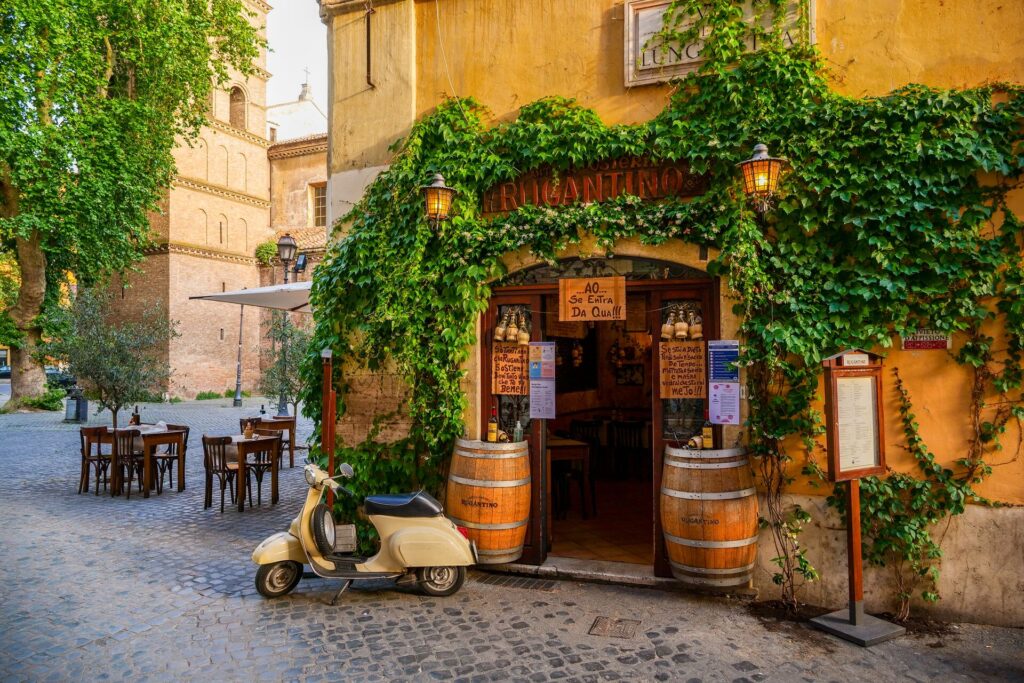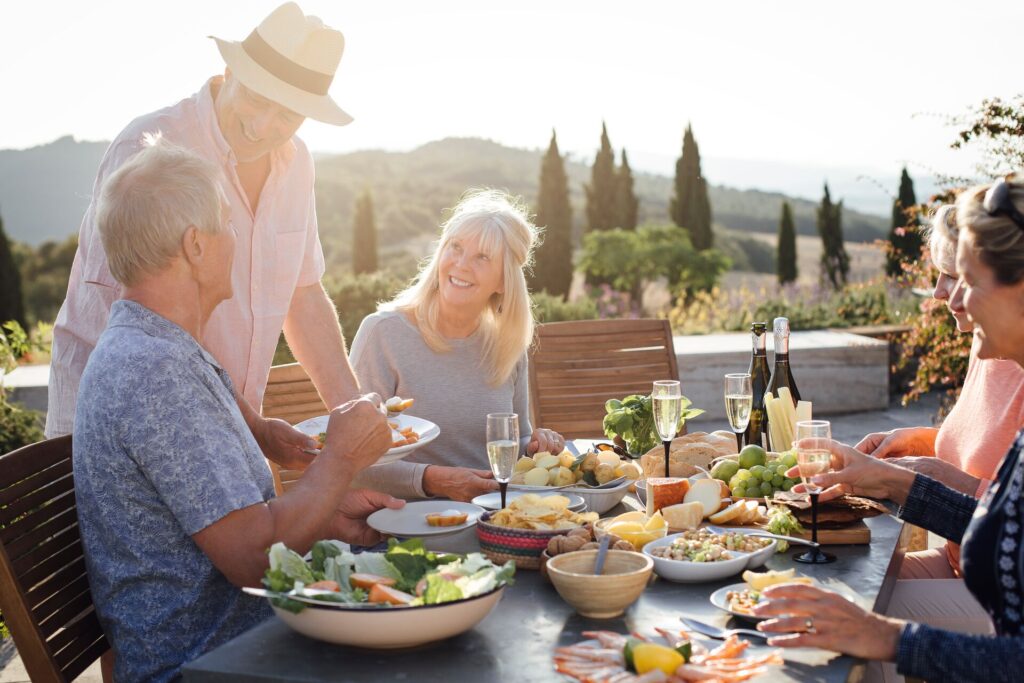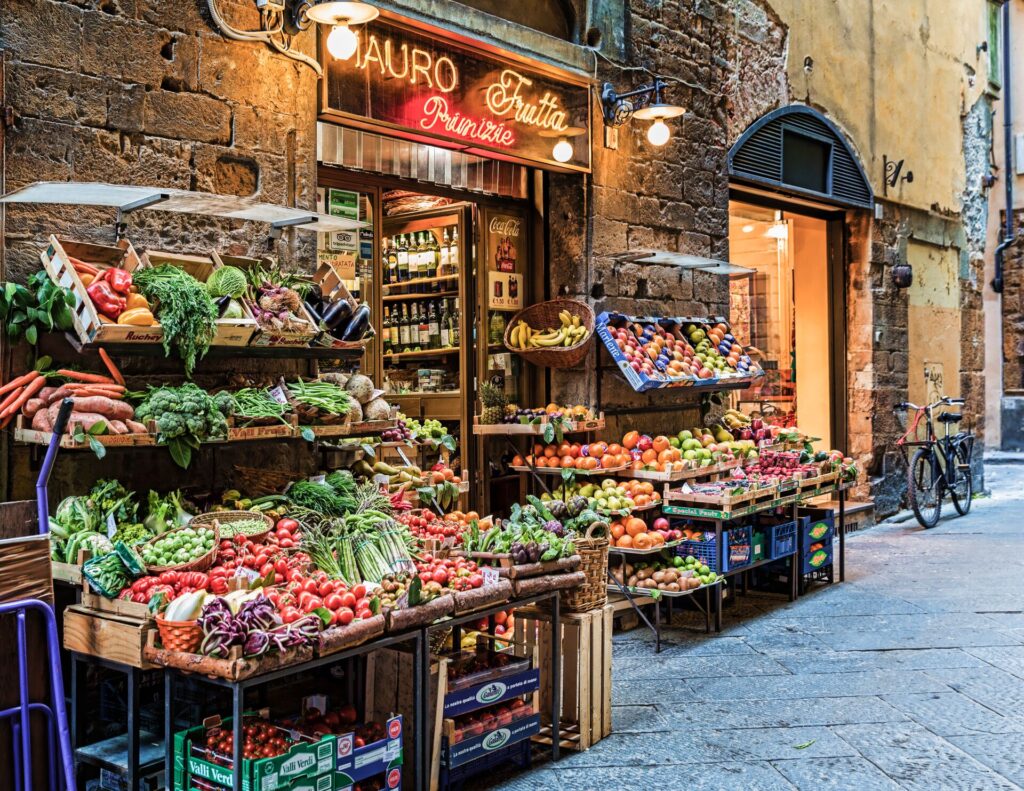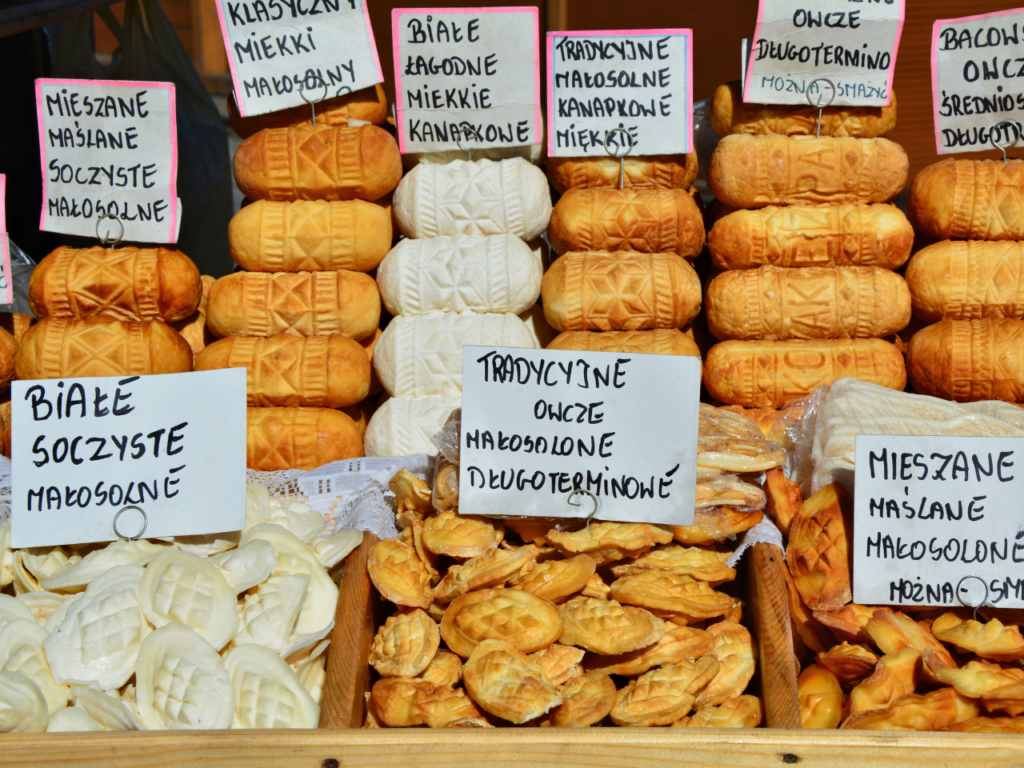When in Rome: How to Find Authentic Italian Food, by Italy Expert Clarisse
Italian cuisine is more than just nourishment; it’s a lifestyle. While Italian dishes are enjoyed worldwide, nothing compares to the taste of truly authentic Italian food. When you pair this delicious cuisine with the inviting atmosphere of a trattoria, it creates an unforgettable experience. But where can you find the best places to indulge your tastebuds?
Travel Director and this week’s Insightful destination expert, Clarisse shares her insider tips on how to find authentic Italian food when you visit this marvelous country. Such a lover of Italy, she made it her home 18 years ago and knows just how to seek out the best authentic Italian food.

No country in the world consumes as much pasta as Italy. Italians eat about 23 kg of pasta in a year.
Food is one of the best reasons to visit Italy in its Jubilee Year
“As the year of the Italian Jubilee, 2025 is a very special time to visit the country,” Clarisse tells us. “It’s the perfect reason to book a trip, along with the food, of course! Taking place only every 25 years, the Jubilee 2025 marks a significant holy year in Rome, Vatican City, and across Italy. It’s a time for celebration, with millions of pilgrims visiting Rome to seek spiritual renewal and a deeper connection to their faith.
Numerous celebrations and events will also be held in other cities and towns. This means the country will have even more of a buzz than normal, so what better time to head over to enjoy the cuisine?”
For authentic Italian food, venture away from main tourist areas
“Busy piazzas and popular landmarks, while beautiful, are often home to restaurants that cater primarily to tourists. To discover something more special, it is often best to explore smaller neighborhoods, head down alleyways and try less-traveled paths.
Keep an eye out for telltale signs. Authentic restaurants often display handwritten menus or chalkboard specials outside, showcasing seasonal ingredients and traditional recipes. A limited menu, typically offering a few selections for each course, is often an indicator of freshly prepared, homemade cuisine. Look out for locals enjoying their meals.
Also, don’t underestimate the value of technology—browsing online forums, food blogs and social media can lead you to beloved neighborhood haunts often overlooked by tourists.”
But not always…
“Keep in mind though that some popular locations also have local culinary gems. In Rome, areas surrounding the Pantheon, Piazza Navona and Campo de’ Fiori are touristy yet house many authentic eateries due to their local markets frequented by residents.
The Jewish Quarter, though less tourist-heavy than the Colosseum, offers an exceptional dining experience. This area is the birthplace of Roman gastronomy, particularly “Cucina Povera,” steeped in simple recipes born from necessity.”
Tips to spot a good restaurant
“Be wary of restaurants where waiters are overly aggressive in trying to lure you inside; this often indicates they’re lacking customers. Another red flag is a menu predominantly written in English – menus tailored for tourists can be a sign that the restaurant doesn’t prioritize authentic Italian food.
A long line outside can also sometimes be misleading. While it might indicate a popular spot, it can also mean that the restaurant caters primarily to tourists rather than offering true local flavors.”

Italy offers many diverse dining options
“To get the best from your dining experiences in Italy, it’s important to consider your expectations regarding the type of food and service you desire. Italy has a diverse range of dining options.
If you’re interested in a more upscale experience, a well-established restaurant is a great choice. Here you’ll not only get delicious cuisine but also knowledgeable waiters, who may speak some English and can guide you through the menu. Note that prices can be quite high, and you may need to reserve.
However, if you are after a more local experience and love Italian homemade Italian food, I would go for a trattoria – these are outstanding. Trattorias typically have a relaxed atmosphere, featuring paper tablecloths and house wines – a superb way to enjoy hearty, local dishes.
You also have the osteria. Historically focused on wine with a few small bites, today, they have evolved into casual dining spots, offering local specialties and a more comprehensive menu.
Then you have bars and pizzerias, where you can get delicious take away items to enjoy authentic Italian food on the go. Sometimes you can have the most fantastic sandwich you never expected!”
Dining with Insight
“Touring with Insight takes all these factors into consideration when producing its premium dining offer. While some meals are enjoyed in the main tourist areas, they are carefully selected and tested for authenticity. You’ll have the freedom to choose where you want to have lunch and dinner on many days, with your Travel Director being an expert on the local scene. They can book tables and arrange transportation if you’re eager to explore.
On many tours, you’ll experience Dine Around evenings. We’ve pre-selected some truly excellent dining options for you to choose from, allowing you to sample various small plates at different restaurants and immerse yourself in a genuine culinary adventure. This means you’ll enjoy simple, quality local food that we have personally vetted, so you won’t be going in blind. Farm-to-Table dining is also a main feature on many of our tours.”

“Agriturismo” is big in Italy
“Agriturismo represents a fusion between farming and tourism, whether it’s a farm-to-table restaurant or a small B&B and is a significant part of tourism in Italy. Many farms have had to reinvent themselves to survive and maintain their operations. The most important aspect is that they grow their own products, whether olive oil or other local goods, and share them with the community.
You’ll find these establishments mostly in Tuscany (where you will also find the Leaning Tower of Pisa) and neighboring Umbria, the lakes region and the south of Italy, where local farming and diversified activities are essential for survival. Look out for these establishments and you are guaranteed authentic Italian food and products.”
Dine Farm-to-Table
“Farm-to-Table dining is a signature feature of our Insight Vacations dining offer, and we have some fabulous, authentic Italian food experiences to enjoy. Plus, each Insight Farm-To-Table dining experience includes a meeting with the hosts, as well as a tour of their gardens or farms. This provides a fascinating opportunity to learn firsthand about local food production.
One of my favorite Farm-to-Table dining experiences in Italy, which is also a MAKE TRAVEL MATTER® Experience is at Alberobello in Puglia. Here you’re treated to a delicious four course dinner on our Country Roads of Southern Italy & Sicily and Grant Italy & Sicily tours. Adhering strictly to the zero-kilometer principle, there is literally a garden behind the restaurant where they grow all their herbs and vegetables.
Though tastings you’ll also learn to recognize the unique characteristics of Tuscan olive oil and Chianti wine, produced on site. It’s a really special experience that provides not just authenticity, but a true insight into local Tuscan life.”
SAVE UP TO $2,000 PER COUPLE* ON YOUR FIRST PREMIUM TOUR.
Plus receive latest offers, travel inspiration, and discover how your travels will make a positive impact. Together, WE MAKE TRAVEL MATTER®. Subscribe NowBe prepared for Italian food in Italy to taste different to home
“I don’t think there is a corner in the world that doesn’t have an Italian restaurant, but don’t be fooled into thinking it is the real deal and be prepared to encounter differences. One simple example is the pepperoni pizza. In Italy pepperoni means bell pepper, so you may get a confused look when you order and give an even more confused look when it arrives!”
Ask Locals for Recommendations
“Italians take immense pride in their culinary heritage and are often more than willing to share their favorite dining spots with enthusiastic travelers. Don’t hesitate to strike up a conversation with the locals; a few simple phrases can go a long way in breaking the ice.
Learning basic Italian phrases such as “Dove si mangia bene?” (Where do you eat well?), “Qual è il suo ristorante preferito?” (What is your favorite restaurant?), and polite greetings like “Buongiorno” (Good morning), “Grazie” (Thank you), and “Arrivederci” (Goodbye) will be warmly received.”
Italians love sign language
“Italy is a nation of gestures, where so much communication can be conveyed without words. One fun activity I enjoy with guests upon their arrival is demonstrating some simple sign language to see if they can understand. Once they realize how straightforward it is, I find guests gain the confidence to use it themselves, especially when it comes to food.
The most recognizable gesture is rubbing your hand on your stomach to signal hunger, letting others know you’re ready to eat. To express that your food was delicious, Italians often twist a finger on their cheek. A perfect response if a waiter asks ”é buono?” (is it good?) is to perform that gesture.
You’ll find that even without fluency in Italian, locals appreciate any effort to speak their language, even if your pronunciation isn’t perfect, they will laugh with you, not at you. This truly helps break the ice. After that, hand signals can take over!”
Check out the markets
“Markets are excellent places to find authentic Italian food. For example, the Mercato di Sant’Ambrogio in Florence features a lively food court with locally made products. Even when the main market is closed, the food court remains open, offering an authentic experience.
Visiting a market is a fun group activity, allowing you to taste a variety of local treats while soaking up the atmosphere like a local.”
Be adventurous and try new things
“Italy boasts a rich variety of regional cuisines, each reflecting local traditions and ingredients. In your quest for authentic Italian food, don’t shy away from the less popular menu items—these lesser-known dishes can provide some of the most fascinating and flavorful experiences.
For instance, when in Florence, as well as visiting Michelangelo’s famous statue of David, dare to try Panino con lampredotto, a sandwich stuffed with a flavorful blend of steamed veal stomach, often seasoned with salsa verde. Rome offers Trippa alla romana, a hearty beef tripe stew and, in Venice, don’t miss Fegato alla veneziana, a stunning pasta or risotto al nero di seppia, made with cuttlefish ink with a striking appearance. It might stain your lips (only for a few seconds) but will leave an unforgettable flavor in your mouth.
When checking the menu, consider ordering the “menu of the day,” which typically offers a limited selection of seasonal, freshly made dishes. This not only ensures you taste something authentic but also minimizes decision fatigue.”
Turn your Italian dreams into reality in premium style with our collection of guided tours to Italy. Take a pause browse and maybe teat your travel knowledge with this week’s Insightful Travel Trivia quiz?
LIKED THIS POST? SHARE WITH YOUR COMMUNITY







